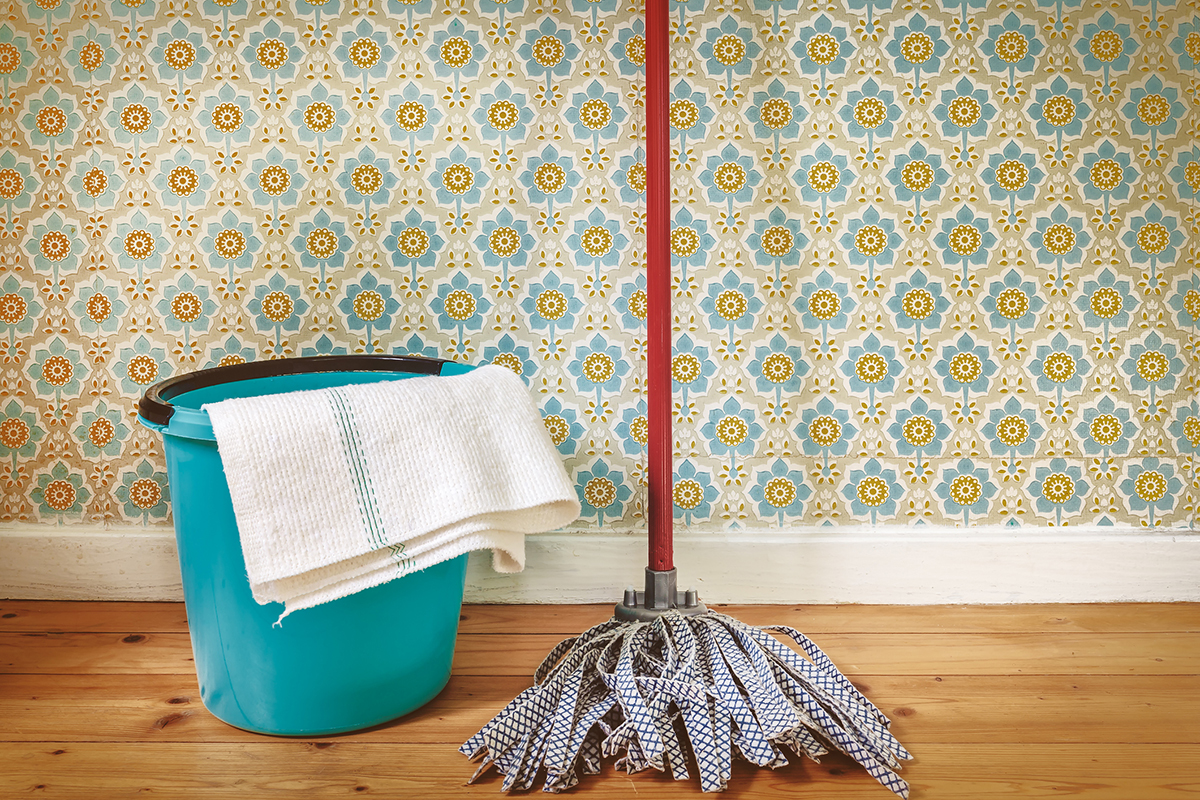A New Englander’s Guide to Spring Cleaning

Photo via iStock
With temperatures soaring above 50 degrees every day this week, it might finally be safe to declare spring sprung. For Bostonians, that means it’s high time to switch over to iced coffee at Dunkin’, reintroduce yourself to your morning Claritin, and break out your top-siders and pastels. However, after a long, cold winter, there’s one way in particular that you should be welcoming spring this year—by freshening up your home.
Okay, so a top-to-bottom house clean might not sound quite as fun as a tanning session by the Charles or a dinner al fresco—but there’s nothing quite as satisfying as coming home to a picture-perfect house. To help you get your space into tip-top shape this season, we asked five local spring cleaning superstars for advice on all things tidy. Take some time to refresh, restore, and reorganize, and you’ll be out the door and stretched out on the Esplanade in no time.
TIDY UP
Springtime got you sneezing? While Boston is a hotbed for elm, hazelnut, poplar, and maple tree pollen, Victoria Amador, co-founder and CEO of Jamaica Plain’s Tremendous Maid, has some housecleaning tips that can help you banish the springtime sniffles for good.
Say Farewell to the Feather Duster
While grandma may have sworn by her charming feather duster, they aren’t the most effective of tools—and they can actually make allergies worse. “They just move the dust around,” Amador explains. Instead, she suggests dusting with a soft cloth moistened either with water or a cleanser of neutral pH.
Sleep Easier
Pollen can lurk in all kinds of sneaky places. According to Amador, one of the biggest culprits is your mattress. She suggests vacuuming your mattress with a HEPA-compliant vacuum every time you change your sheets to prevent the buildup of dust and other allergens.
Call In the Pros
While vacuuming might work like a charm on your mattress, Amador warns that your Hoover has its limits. “We make it clear to our clients who have asthma or allergies that we can vacuum their carpets, but they really need to have them deep-cleaned,” she says. Amador recommends a professional deep-cleaning at least twice a year to keep everything feeling fresh.
ORGANIZE
When the cold traps you indoors for four months, it’s easy for your space to become cluttered. Luckily, Sarah Buckwalter, certified professional organizer and founder of Organizing Boston, is an expert at all things orderly.
Declutter and Donate
The downside to warmer weather? The dreaded bi-annual closet changeout. To make the process of packing away your sweaters and pulling out your shorts less cumbersome, Buckwalter suggests doing some simple sorting before you start folding and hanging. “Pull everything out of the closet, because there’s probably things way back in the deep dark recesses that you’re never going to wear,” she says. “This is a good time to donate those things. Declutter before you put things away.”
Leave It Hanging
Can’t seem to fit all your summerwear into your closet? Buckwalter advises her clients to invest in a clothing rack for the basement or attic, to store clothes that only emerge on special occasions. But ditch those plastic bags from the dry-cleaners and find some fabric ones: they allow your cocktail dresses and three-piece suits to breathe properly. “Cedar and lavender are really great for keeping moths away,” Buckwalter adds.
Stay Dry
While it may finally be warming up, April showers are just getting started. To keep wet umbrellas and galoshes from soaking your floors and carpets, Buckwalter suggests reorganizing your entryway to encourage your family to take off their rain gear when they walk in the door. “Right in the entrance I have a plastic tray I use for boots, so if there’s mud on them, it’ll get on the tray and not the floor,” she says. Indoor/outdoor rugs or a coat rack can work just as well—just make sure that the solution you choose is simple, so it can be easily integrated into everyone’s daily routine.

Photo courtesy of Charlie Allen Renovations
REVITALIZE
Whether you find them charming or just exasperating, every old New England home comes with its own set of quirks. Julie Palmer, president of Charlie Allen Renovations, has plenty of advice on how to make the old feel a little newer.
Seek Out Storage
One of the biggest problems in old houses is finding enough space to store your possessions. If you’re looking to add closets or built-ins, Palmer recommends working with a contractor who specializes in old home renovations, as they know all the ins and outs of utilizing space. “If you take a look at the floor plan, you can see how you can reconfigure the existing floor plan of the house to create room for closets,” she says.
Change Your Perspective
While old-timey features like radiators, drafty windows, and creaky floors can get on your nerves, Palmer encourages homeowners to see their charm. “Everything can be cleaned, painted, or spruced up,” she says. “And then they become a feature.”
Pay Attention to Detail
If you just have a few fixtures that need a refresh, you can maintain your period look two different ways—by buying authentic pieces from an architectural salvage yard or by buying from a reproduction specialist. “You might even be able to match some of the original fixtures you have in your house,” Palmer says.
EMBELLISH
For Jill Goldberg, interior designer and owner of South End interiors boutique Hudson, there’s no better time than the spring to introduce some fresh designs into your living space.
Live Colorfully
Refreshing your space for spring doesn’t have to be an HGTV-level ordeal—it only takes a few simple pops of color to bring life back to your home. “You can buy some really great, inexpensive art on 20×200 or Etsy,” Goldberg says. “That’s going to add a lot of life to the room.” She also recommends investing in some throw pillows and coffee table books to add more personality.
Bring the Outdoors In
Springtime itself can serve as great inspiration when you’re shopping for interior decor. “Natural elements, like baskets, are great to bring in for spring and summer,” Goldberg says. “I also like pulling in greens, and even some real plants, in fun planters, vases, or bowls.”
Reflect
Cure your wintertime cabin fever for good by opening up your small, cramped rooms. “A strategically-placed mirror can give the sense of doubling the space,” Goldberg says. Try reflecting a window to brighten up a dark room, or reflecting a hallway to create the illusion of increased length.
NURTURE
If your thumbs aspire to be green, Lindsey Swett, owner of the South End’s Niche Garden Supply, has plenty of advice on how to get your hands in the dirt.
Catch Your Breath
“Plants have been proven to provide benefits to the air quality,” Swett says. Certain houseplants can free your air from chemicals like formaldehyde and ammonia, which have been known to cause symptoms like headaches and eye irritation. For maximum air purification and minimum upkeep, Swett recommends nurturing a snake plant, a mild-mannered perennial whose air-cleaning chops have earned the praise of NASA.
Take It Slow
If the mere prospect of gardening has you shaking like a leaf, Swett advises you to take your time and start off with some easygoing greenery. “For a novice indoor gardener, I’d recommend epipremnum,” she says. “They are really easy to care for, and they also indicate when they’re not happy, and give you some time to adjust to that.” For those breaking ground outdoors, Swett suggests bulbs, pansies, or grasses. “You can just pop them in and see how it goes,” she says. “They’re easy, they’re forgiving, and they’re frost tolerant, so if we have another winter throwback, they’ll survive it.” (But let’s not think about that last part.)
Keep an Eye Out
The most important tip that new gardeners should keep in mind? “Observation is key,” Swett says. “Keep an eye on your plant and learn its watering needs. The more you pay attention, the more likely you are to catch any pest issues or stress.”


